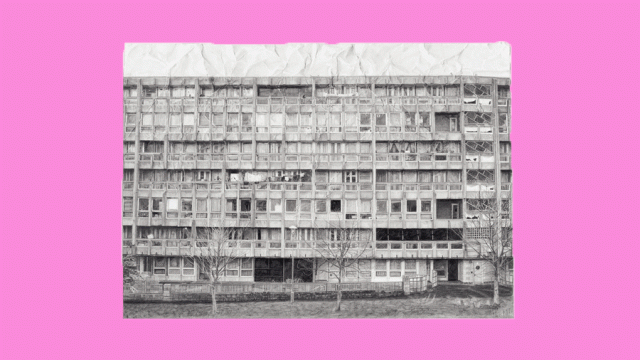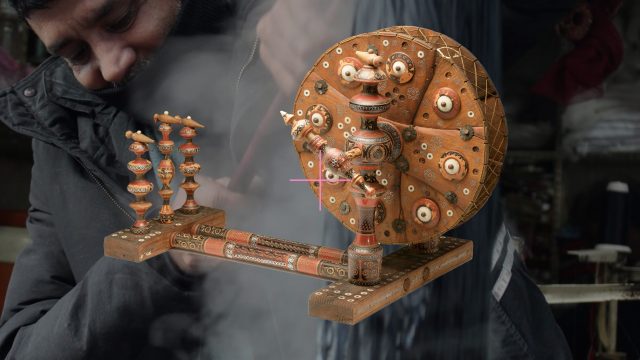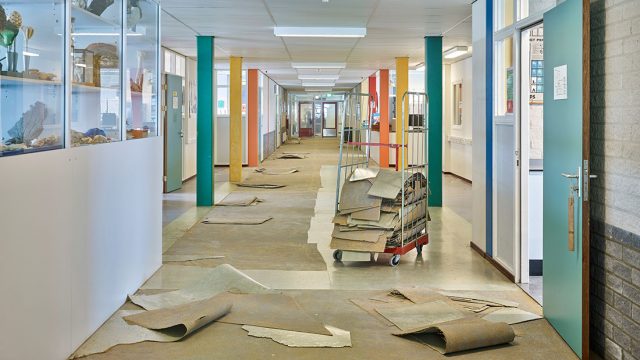George Fereday is an associate teaching professor at the School of Art, Architecture and Design at London Metropolitan University. He was one of the participants in the Field Notes summer school, organised collaboratively between V&A’s Make Good: Rethinking Material Futures programme and Sylva Foundation.
Fereday’s research interests are focused on material innovation for the built environment and the use of natural materials in construction. He has recently written a paper on the challenges and opportunities of using locally grown and coppiced sweet chestnut within the UK construction industry. Some of this research was put into practice during the Field Notes summer school, and in this post Fereday explores the material story behind his piece Beam = Tree, a construction beam that he made as part of the project.
I was inspired to take part in the Field Notes summer school to showcase the potential of UK-grown hardwoods in construction. Despite broadleaves accounting for half of all trees in the UK, and almost 75% of all trees in England, very little locally grown hardwood (the type of wood that is produced by broadleaf trees) is used in buildings. Instead, roughly 90% of timber used for new homes in England is imported softwood from overseas, and our local hardwood resource is overlooked. To make matters worse, 85% of all hardwood harvested in the UK each year is burnt as logs, rather than used for the production of timber. The UK government subsidises the burning of wood as biomass, accelerating the release of centuries of sequestered carbon, back into the atmosphere.
For my contribution to the Field Notes summer school, I was keen to challenge the flow of British hardwood timber to power stations and wood-burners in the UK. The challenge then, was to find functional uses for hardwood that overcome some of the supply-chain and economic barriers – and prevent it being burnt. Designed in the right way, hardwood building products have the potential to support a sustainable local economy, contribute to biodiversity and ensure that woodlands are managed for improved ecological health, by adding value to timber. For these reasons, it was important to me that my piece for the Field Notes exhibition was both useful in buildings, where wood can be used long-term, and made of multiple species that reflect the UK’s mixed deciduous woodlands. A deciduous tree is one that sheds its leaves annually.
This is how I came upon the idea to design a beam to be used in housing construction. The beam’s design embraces the natural strength and beauty of roundwood and incorporates three species in a single product. To manufacture the beam, a single ash tree trunk, affected by ash dieback disease, was cut in half horizontally down its length on a mobile sawmill and inverted to form the top and bottom parts of a beam. The beam was then stiffened with triangulating dowels made from other under-used hardwood species; sweet chestnut and alder. The ash is unseasoned, while the alder and sweet chestnut are dried timber. This combination leads to expansion of the dowels, due to moisture migration from the unseasoned ash, creating a natural tight fit. To ensure against future shrinkage, which might reduce stiffness of these joints over time, a single glued oak wedge is inserted into the end grain of each dowel, mimicking techniques used in greenwood chair-making. The holes for the dowels were cut with long drill bits at a 45 degree angle to ensure maximum stiffness of the beam.
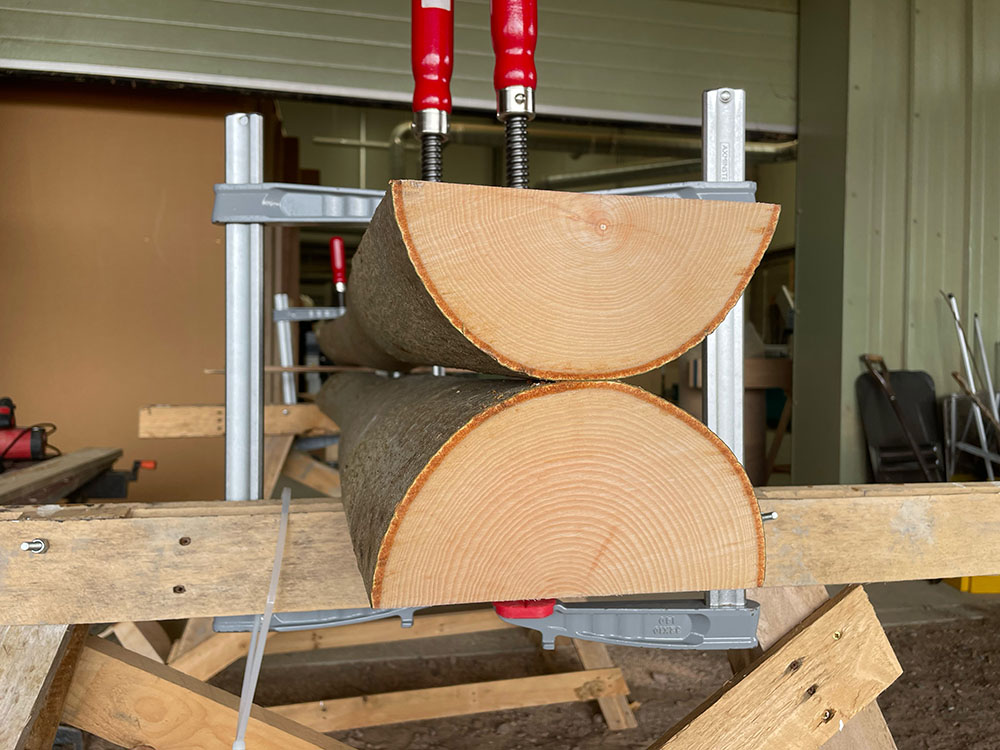
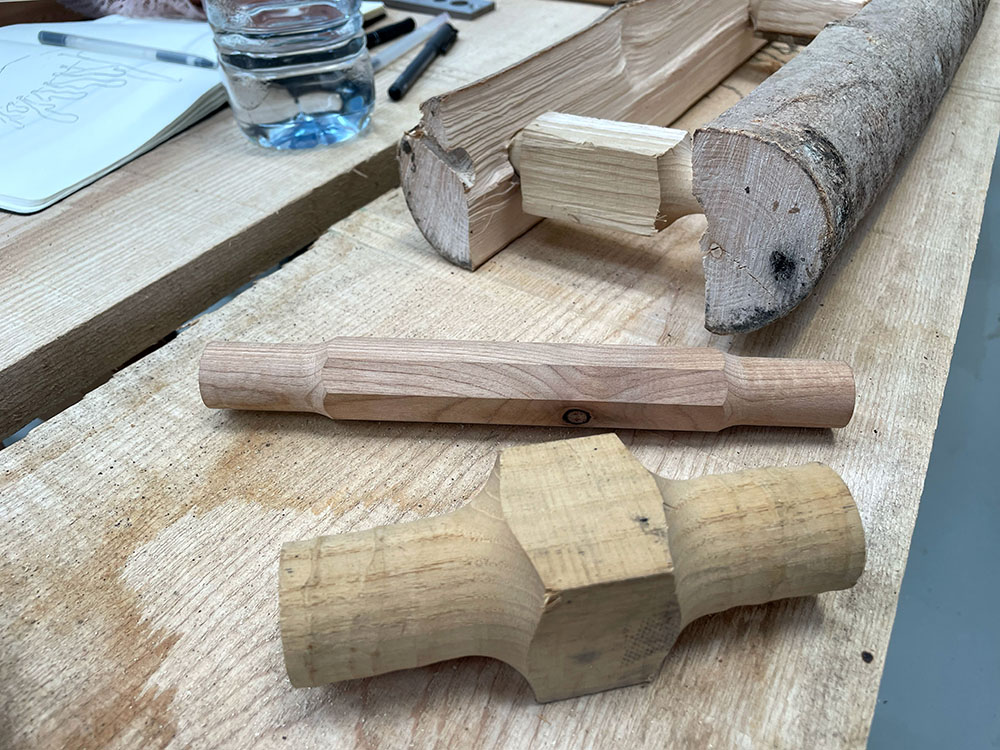
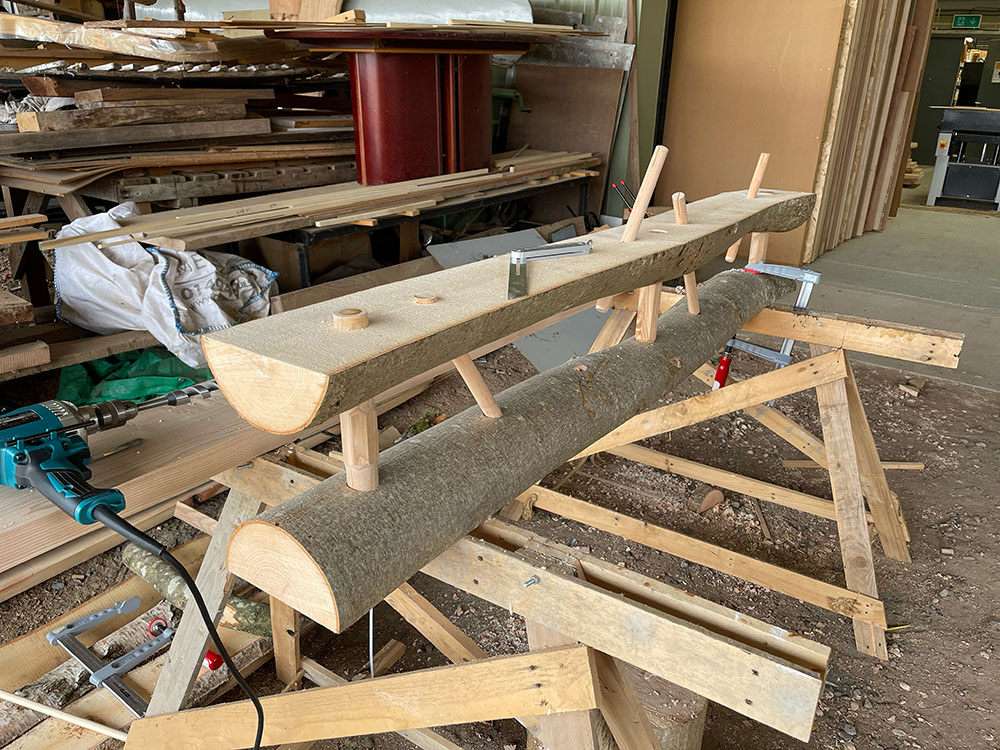
With minimal processing steps – sawmilling, drilling and dowelling – the beam is designed to be low-cost to produce, and align with the UK’s existing wood processing infrastructure and skills. A single cut along the length of the log maximises the yield of hardwood timber and retains the natural form and strength of the tree. Inverting the cut log (so that the cut surface face outwards), means two flat surfaces – useful for interfacing with other materials in construction. The beam also uses multiple species of hardwood, communicating the viability of the UK’s varied hardwood resource.
Designing a locally made product composed of multiple, locally grown wood species, can help promote more forestry management of our mixed deciduous woodlands and reduce our reliance on timber from overseas. The regenerative benefits of this type of design strategy have the potential to be far reaching, growing a sustainable, local economy of meaningful, rewarding jobs, while improving biodiversity and woodland health in an era of climate change.
Field Notes is on show in the Dr Susan Weber Gallery until 31 October 2023.
Field Notes is the second iteration of Make Good: Rethinking Material Futures – a V&A public project investigating the use of natural, renewable materials in design and architecture. It invites practitioners from different fields to share research, knowledge and skills and considers the responsibilities of designers and consumers toward the natural world.
